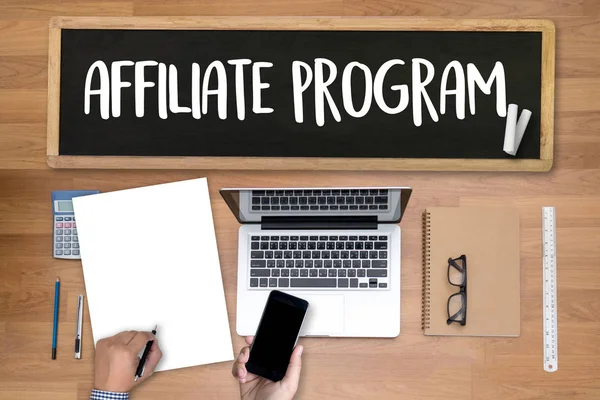Ah, the email list. The golden ticket in the world of blogging and affiliate marketing. If you’re not building your email list, you might as well be trying to bake a cake without flour — it’s just not going to work! So, grab your favorite snack (we all know snacks are the true MVPs) and let’s dive into the nitty-gritty of how to grow your email list like a pro.
Why Email Lists Are the Secret Sauce
First things first: why should you care about growing your email list? Well, let me break it down for you.
- Direct Connection: Email allows you to communicate directly with your audience. No pesky algorithms deciding who gets to see your content! If you’ve ever felt like your Facebook posts vanished into the ether, you understand the frustration. With email, if you send it, they get it. Period.
- Higher Conversion Rates: Emails have significantly higher conversion rates compared to social media. In fact, studies show that email marketing can yield a return on investment (ROI) of up to 4,400%. That’s like finding a $100 bill in your old winter coat — unexpected and very welcome!
- Ownership: You own your email list. Unlike social media followers, you won’t lose your audience if a platform decides to change its rules. Remember when Facebook changed its algorithm and suddenly nobody saw your posts? Yeah, not cool. With email, you’re in charge.
- Build Trust and Authority: Regularly connecting with your audience through emails allows you to build relationships. People buy from those they trust, so the more valuable content you provide, the more authority you gain in your niche.
Now that you’re convinced that email lists are the real deal, let’s get to the step-by-step guide!
Step 1: Choose the Right Email Marketing Service
The first step to building your email list is to choose an email marketing service. Think of it as choosing a partner for a dance-off — you want someone who can keep up with your moves!
Popular Email Marketing Services:
- Mailchimp: Great for beginners and has a free plan to get you started. Just watch out for the confusing pricing structure as you grow. Seriously, it’s like trying to understand a Rubik’s Cube blindfolded.
- ConvertKit: Tailored for creators, it’s super user-friendly and has powerful automation features. Perfect if you plan to scale. Plus, their customer service is top-notch — like having a personal cheerleader.
- AWeber: Another solid choice for small businesses and bloggers, it offers robust features and excellent customer support. Their drag-and-drop email builder is as easy as pie (and who doesn’t love pie?).
- ActiveCampaign: Ideal for those who want advanced automation features. It can feel a bit overwhelming at first, but once you get the hang of it, you’ll be sending targeted campaigns like a pro.
- GetResponse: Known for its landing page builder and webinar features, it’s a solid choice for marketers looking to grow their lists. Plus, their email templates are on point!
👉 Pro Tip: Take advantage of free trials to see which service feels right for you. No one wants to be stuck in a bad relationship!
Step 2: Create a Sign-Up Form That Shines
Your sign-up form is like a first date — it needs to be attractive and make people want to stick around. Here are some tips to create a captivating sign-up form:
- Keep It Simple: Don’t ask for too much information upfront. Just a name and email address should do the trick. You can always ask for more later! Remember, less is more. If someone has to fill out an entire application, they’ll likely back out faster than you can say “unsubscribe.”
- Make It Pop: Use eye-catching colors and fonts that align with your brand. You want your form to stand out like a unicorn at a horse show. Think bright colors, fun graphics, and a clear layout.
- Clear Call-to-Action (CTA): Use actionable language like “Join the Tribe!” or “Grab Your Freebie!” to encourage sign-ups. CTAs are your best friend here; it’s like giving a gentle nudge to your readers.
- Mobile Optimization: Ensure your sign-up form looks great on mobile devices. A huge chunk of email sign-ups happens on smartphones, so if your form is hard to read or fill out, you’ll lose potential subscribers faster than a toddler can make a mess.
👉 Design Tip: Consider using tools like OptinMonster or Sumo to create pop-ups and embedded forms that catch the eye.
Step 3: Offer Incentives to Sign Up
People love free stuff. Seriously, they’d probably sign up for an email list just to get a coupon for a free cookie (or is that just me?). Here are some incentives you can offer:
- Lead Magnets: Create valuable resources like eBooks, checklists, or guides that your audience will find helpful. Make sure it’s something they can’t resist. For example, if you’re a mom blogger, consider offering a “Survival Guide for Moms: Tips to Thrive Without Losing Your Mind.” You can also use Canva to design stunning eBooks easily.
- Exclusive Content: Offer subscribers access to special content, discounts, or early access to products. This creates a sense of belonging, making them feel like VIPs in your club.
- Contests and Giveaways: Who doesn’t love a good giveaway? Just make sure it’s relevant to your niche. If you’re in the DIY space, consider giving away a crafting kit or gift card to a home improvement store. Tools like Rafflecopter can help you run contests seamlessly.
- Free Trials: If you’re selling a service or product, offering a free trial can entice people to sign up. Just be sure to communicate the value they’ll receive during that trial period.
👉 Incentive Idea: Consider creating a mini eBook on budgeting tips or a guide to starting a side hustle specifically for moms. That way, you’re targeting your ideal audience while providing value!
Step 4: Promote Your Sign-Up Form Everywhere
Now that you have a shiny sign-up form and irresistible incentives, it’s time to show it off! Promote your sign-up form in as many places as possible.
- On Your Blog: Place sign-up forms in your blog’s sidebar, at the end of your posts, or as a pop-up. Just don’t go overboard — nobody likes a spammy site! Keep it tasteful and relevant.
- Social Media: Share links to your sign-up form on your social media channels. Create engaging posts that highlight the benefits of joining your email list. Use visuals and testimonials to grab attention.
- Guest Blogging: Write guest posts for other blogs in your niche and include links to your sign-up form in your author bio. This is a great way to tap into new audiences who are already interested in what you have to offer.
- Networking Events and Webinars: If you attend or host webinars, mention your email list and encourage attendees to sign up for exclusive content. People love being in-the-know!
- Email Signatures: Add a link to your sign-up form in your email signature. Every email you send becomes an opportunity for new sign-ups. Just imagine how many people you interact with daily!
👉 Promotion Tip: Use Canva to create visually appealing graphics for your social media posts to grab attention!
Step 5: Create Engaging Email Content
Once people start signing up, you want to keep them engaged with your emails. No one likes a boring email — it’s like a party where nobody shows up!
- Be Authentic: Write emails in your unique voice. Your subscribers want to connect with the real you, not some corporate robot. Use humor, personal stories, and relatable content to build rapport.
- Provide Value: Always aim to offer something valuable in every email, whether it’s a helpful tip, resource, or entertaining story. People will appreciate your emails and look forward to receiving them. It’s like giving them a little present every time they see your name in their inbox.
- Include Visuals: Use images, GIFs, or videos to make your emails visually appealing. A well-placed meme can be the difference between a reader scrolling past and sharing your email with friends. Just make sure they’re relevant to your content!
- Clear CTAs: Every email should have a clear call-to-action. Whether you want subscribers to read a blog post, check out a product, or follow you on social media, make it easy for them to take action.
👉 Email Tool: Consider using Mailchimp or ConvertKit to design visually appealing emails that capture attention.
Step 6: Segment Your List for Better Targeting
As your list grows, consider segmenting it based on different criteria. This allows you to send targeted content that resonates with specific groups of subscribers. It’s like being a matchmaker for your content!
- Interest-Based Segmentation: If your audience is interested in multiple topics (like DIY projects and budgeting), segment them based on their interests. This way, you can send tailored content that they’ll actually want to read.
- Behavioral Segmentation: Track how subscribers engage with your emails. If someone frequently clicks on links about budgeting tips, consider sending them more content related to that topic. This is a great way to nurture leads and provide more value.
- Demographic Segmentation: Consider factors like age, location, or gender when segmenting your list. This can help you create content that’s relevant to specific demographics.
👉 Segmentation Tip: Use the features of your chosen email marketing service to automate the segmentation process. This will save you time and help you focus on creating great content!
Step 7: Analyze and Optimize Your Email Campaigns
Finally, it’s essential to analyze the performance of your email campaigns. This will help you understand what’s working and what’s not, allowing you to make improvements over time.
- Track Metrics: Monitor key metrics like open rates, click-through rates, and conversion rates. These numbers provide insights into how well your emails are resonating with your audience.
- A/B Testing: Experiment with different subject lines, content formats, and send times to see what resonates best with your subscribers. A/B testing is like a little science experiment for your emails — except with less mess and more potential for success.
- Gather Feedback: Don’t be afraid to ask your subscribers for feedback. You could send out a quick survey or ask them directly in your emails what content they want to see more of. This will show that you value their opinions and help you create content that truly resonates.
👉 Optimization Tip: Make adjustments based on your analysis and continue testing new strategies. Email marketing is not a “set it and forget it” game; it requires ongoing effort to optimize and improve.
Your Email List Is Your Superpower!
Growing your email list takes time and effort, but the benefits are worth it. By choosing the right email marketing service, creating enticing sign-up forms, offering valuable incentives, promoting effectively, and providing engaging content, you’ll be well on your way to building a thriving email list.
Remember, the key is to be authentic, provide value, and keep things fun! Your email list is not just a numbers game; it’s about building relationships with your audience. And as you continue to grow your list, you’ll find that those relationships translate into loyal readers, customers, and even friends.
So, what are you waiting for? Start implementing these steps today, and watch your email list grow faster than your kids can finish a bag of chips!


